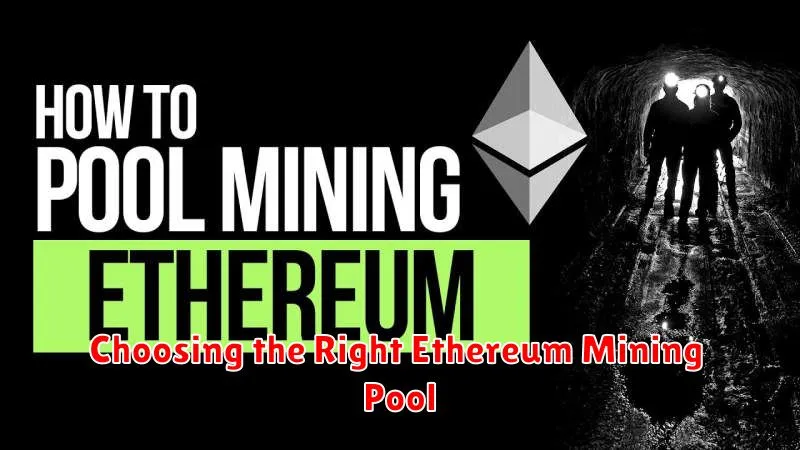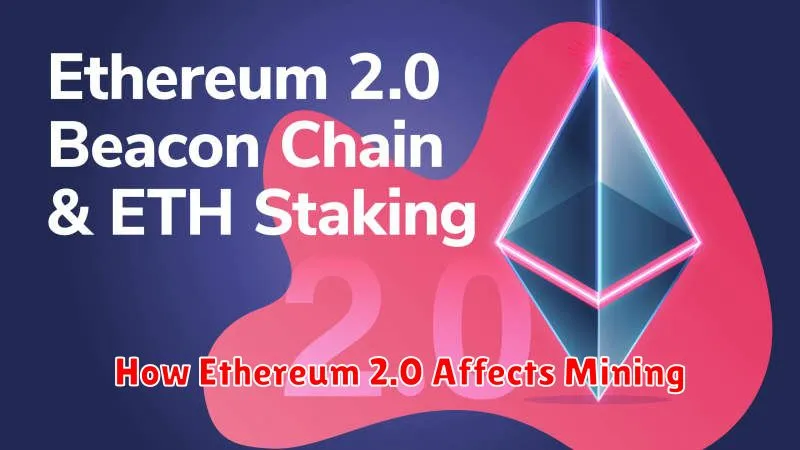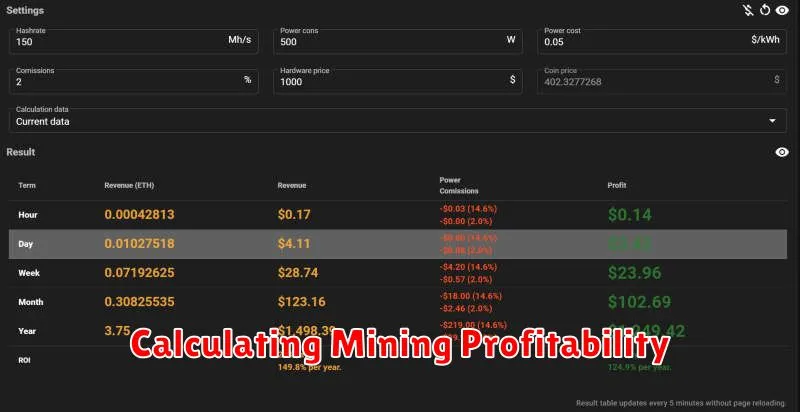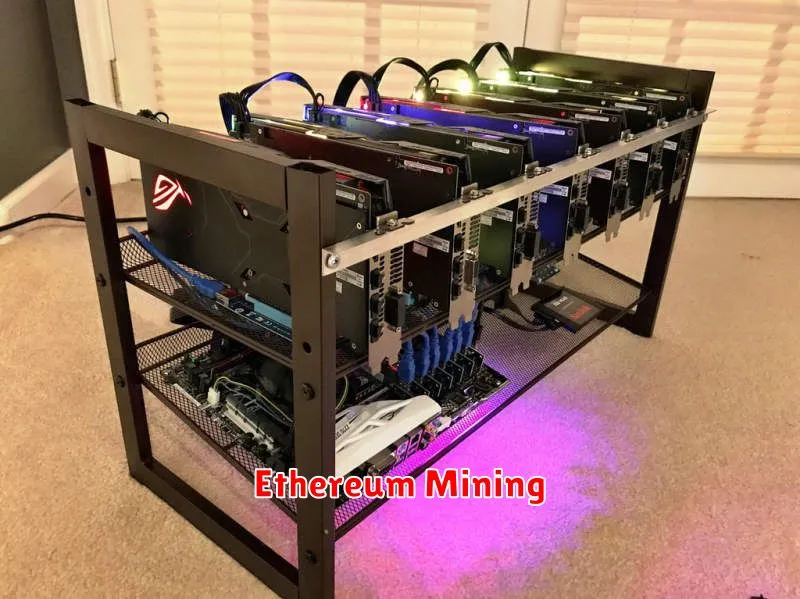Are you interested in learning how to mine Ethereum in 2025? This comprehensive, step-by-step guide provides crucial information on Ethereum mining profitability, hardware requirements, and the latest mining techniques. We’ll explore the challenges and rewards of Ethereum mining in the evolving crypto landscape of 2025, covering everything from setting up your mining rig to optimizing your hash rate for maximum Ethereum earnings. Whether you’re a seasoned miner or a complete beginner, this guide will equip you with the knowledge to navigate the complexities of Ethereum mining in 2025.
Ethereum Mining Basics

Ethereum mining involves verifying and adding new transactions to the blockchain, a process called proof-of-work (PoW). Before the merge to proof-of-stake, miners competed to solve complex cryptographic puzzles using powerful computers. The first miner to solve the puzzle gets to add the next block of transactions to the blockchain and is rewarded with newly minted ETH and transaction fees.
Mining hardware is crucial. High-performance graphics processing units (GPUs) are typically used due to their parallel processing capabilities. The hash rate, or the speed at which a miner can solve these puzzles, directly impacts profitability. Higher hash rates increase the likelihood of earning rewards.
Mining software facilitates the process. This software connects your mining hardware to the Ethereum network, allowing it to participate in the consensus mechanism. Configuration is critical, ensuring your hardware is optimally utilized. Mining pools are often used to aggregate computing power, increasing the chances of finding a block and receiving a reward, although this involves sharing the rewards amongst pool participants.
Profitability is heavily influenced by factors like the ETH price, electricity costs, hardware costs, and the network’s difficulty (which reflects the overall computing power of the network). Before starting, it’s vital to perform a thorough profitability analysis to determine if mining is financially viable in your specific context.
It’s important to note that Ethereum transitioned from Proof-of-Work to Proof-of-Stake (PoS) in 2022. Therefore, mining Ethereum in its traditional sense is no longer possible. This section provides background information for understanding the historical context of Ethereum mining.
Best Ethereum Mining Hardware
By 2025, the Ethereum mining landscape will likely be significantly different than it is today, primarily due to the transition to proof-of-stake. However, if mining is still viable (perhaps through alternative Ethereum-based networks or other cryptocurrencies using similar algorithms), the best hardware will prioritize high hash rates and low power consumption to maximize profitability.
ASIC miners designed for Ethash (or similar algorithms) will likely still be the most efficient choice. Specific models will depend on the advancements in technology by that time, but look for miners with the highest reported hash rate per watt. Features like efficient cooling solutions and reliable power supplies are crucial.
While GPUs might still be used, their efficiency compared to ASICs will likely be much lower, rendering them less profitable. However, their versatility for other tasks could make them an attractive option for individuals wanting to diversify their crypto activities.
It is important to note that the viability and profitability of mining in 2025 is uncertain. Thorough research and cost analysis considering electricity prices and hardware costs are essential before investing in any mining equipment.
Choosing the Right Ethereum Mining Pool

Selecting the right Ethereum mining pool is crucial for maximizing your profitability and minimizing your risk. Several key factors should guide your decision.
Pool Size and Hashrate: Larger pools generally offer more consistent payouts due to their higher hashrate, increasing your chances of finding blocks frequently. However, this also means sharing rewards with more miners.
Fees: Pay close attention to the pool’s fee structure. Lower fees translate to higher net earnings. Understand whether fees are fixed or variable, and how they are calculated.
Payment Methods and Frequency: Check the available payment methods (e.g., ETH) and the payout frequency (e.g., daily, weekly). Choose a pool that aligns with your preferences and payment needs.
Pool Software and Infrastructure: A reliable pool will have robust software and well-maintained infrastructure, ensuring smooth and uninterrupted mining operations. Look for pools with a positive reputation and a proven track record.
Geographic Location and Server Latency: Minimize latency by selecting a pool with servers geographically close to your mining rig. Reduced latency contributes to more efficient mining.
Transparency and Reputation: Choose a pool with transparent reporting and a good reputation in the community. Research reviews and discussions to assess their trustworthiness.
Ultimately, the “best” pool depends on your specific circumstances and priorities. Carefully weigh the factors above to make an informed decision that maximizes your Ethereum mining returns.
Setting Up a Mining Rig

Setting up an Ethereum mining rig in 2025 requires careful planning and selection of components. The profitability of mining depends heavily on hardware costs, electricity prices, and the network difficulty.
First, choose your graphics cards (GPUs). High-end cards with ample VRAM are crucial for efficient mining. Consider the power consumption of each card and plan your power supply accordingly. AMD and Nvidia GPUs are both viable options, but research current market performance and availability.
Next, select a suitable motherboard with enough PCIe slots to accommodate your GPUs. A stable power supply unit (PSU) capable of handling the total power draw of all components is essential. Ensure the PSU has adequate wattage and high-quality components to avoid instability.
You’ll also need a CPU, though it plays a less significant role compared to the GPUs. A relatively inexpensive CPU will suffice. Don’t forget RAM and an SSD or NVMe drive for the operating system and mining software.
Finally, assemble the components in a suitable case with adequate cooling. Proper airflow is crucial to prevent overheating, which can damage your hardware and reduce mining efficiency. Consider using multiple fans or a liquid cooling system for optimal performance.
Before starting, install the operating system (e.g., Windows or Linux) and the necessary mining software. Configure the software to connect to a mining pool to maximize your chances of earning ETH.
Cloud Mining vs GPU Mining
Choosing between cloud mining and GPU mining for Ethereum in 2025 depends on your technical expertise and financial resources. GPU mining requires purchasing and maintaining powerful graphics processing units (GPUs), demanding technical knowledge and significant upfront investment. However, it offers greater control and potentially higher profitability, if electricity costs are low and the hardware remains efficient.
Conversely, cloud mining involves renting hashing power from a data center. This removes the need for hardware management, simplifying the process and lowering initial costs. However, profitability is affected by the provider’s fees and electricity rates, and you have less control over the mining operation. Furthermore, the risk of scams or poorly performing providers is higher with cloud mining.
Key considerations include the cost of electricity, the initial investment required, the level of technical expertise needed, and the potential risks involved in each approach. Carefully evaluating these factors is crucial before selecting a mining method.
How Ethereum 2.0 Affects Mining

Ethereum 2.0, also known as Ethereum’s consensus mechanism shift to proof-of-stake (PoS), fundamentally alters Ethereum mining. Before the upgrade, Ethereum utilized a proof-of-work (PoW) system, requiring miners to solve complex computational problems to validate transactions and add new blocks to the blockchain. This process, inherently energy-intensive, rewarded miners with newly minted ETH.
The transition to PoS eliminates the need for miners and their energy-consuming hardware. Instead, validators are chosen proportionally to the amount of ETH they stake, securing the network and earning rewards. This means that traditional Ethereum mining using GPUs or ASICs is no longer viable after the Ethereum 2.0 upgrade.
Therefore, in 2025, mining Ethereum in the traditional sense will be impossible. Anyone looking to participate in securing the Ethereum network will need to stake ETH instead of mining it. This requires a different set of considerations, including the minimum amount of ETH required to stake and the risks associated with validator participation.
Calculating Mining Profitability

Accurately calculating Ethereum mining profitability in 2025 requires a multifaceted approach. Several key factors must be considered to determine whether mining will be a profitable venture.
First, you need to determine your hardware’s hash rate. This represents the computational power of your mining rig and directly impacts your earning potential. Higher hash rates generally translate to more ETH mined per unit of time.
Next, consider the electricity costs associated with running your mining operation. This is a significant expense and can drastically reduce profits if your electricity prices are high. Calculate your kilowatt-hour (kWh) cost and the power consumption of your mining rig to determine your energy expenditure.
Ethereum’s price is another critical factor. Fluctuations in the market can significantly affect your overall profitability. Monitor the current price and consider potential price movements when making your calculations.
Finally, account for the mining difficulty. As more miners join the network, the difficulty increases, making it harder to mine ETH and reducing individual rewards. This factor needs to be integrated into your profitability projections.
By carefully considering these key variables – hash rate, electricity costs, ETH price, and mining difficulty – you can create a reasonably accurate model to predict your potential mining profits and determine if it’s a worthwhile endeavor in 2025. Remember that these calculations provide an estimate, and actual profitability may vary.

